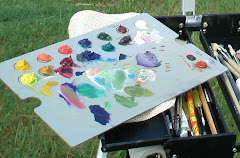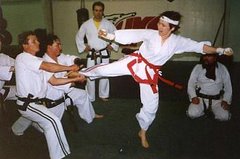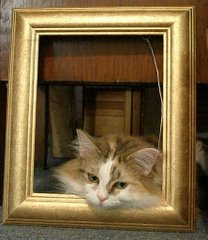 Although I've painted en plein air with only 3 primaries plus white, I prefer having a wider choice of colors in cool and warm ranges.
Although I've painted en plein air with only 3 primaries plus white, I prefer having a wider choice of colors in cool and warm ranges.The cool row (near left to right) is lemon yellow, yellow ochre, permanent rose, alizarine crimson, ultramarine blue, a cool green (I don't remember which), burnt umber and titanium white.
The warm row (far left to right) is cad yellow, cad orange, cad red light, cobalt blue, viridian green, burnt sienna and titanium white.
The lower right corner holds (top) raw umber (bottom) transparent red ochre.
I've used various color palettes in the past, but I always come back to these colors. There has been speculation as to whether ultramarine blue is warm or cool. My personal view is that its temperature depends on the other colors surrounding it. Many people consider yellow ochre as a warm color, but again I feel its temperature is dependent upon the neighboring colors.
I don't use black in my plein air palette. A wonderful black can be mixed with viridian or sap green plus alizarine crimson. Another black comes from mixing burnt umber plus ultramarine blue. Mixing 3 of my darkest colors presents another black. There is very rarely a pure black in nature. (A lovely green apple color can be made using lemon yellow and just a speck of ivory black...but I still don't carry a tube of black when plein air painting).
When painting greens, I begin with a blue plus a yellow and add hints of other colors until I get the right hue. Although I have green pigment on my palette, I only use it in small touches in other mixtures. And sometimes I never touch the tube greens while painting.










No comments:
Post a Comment